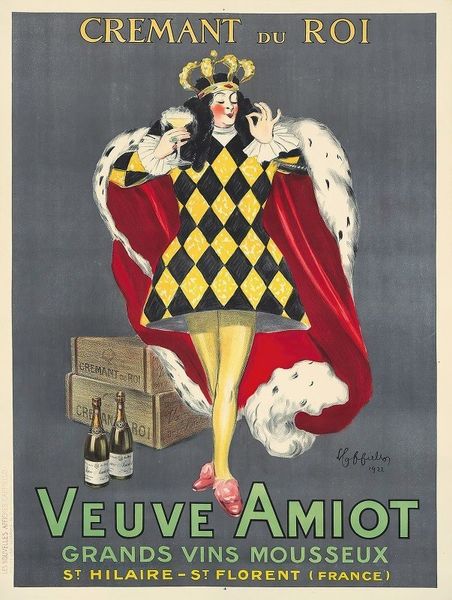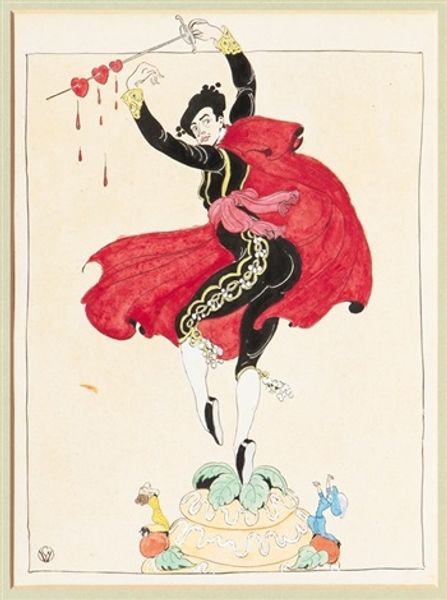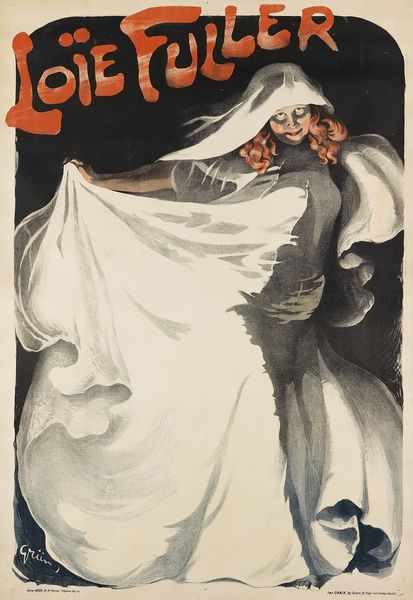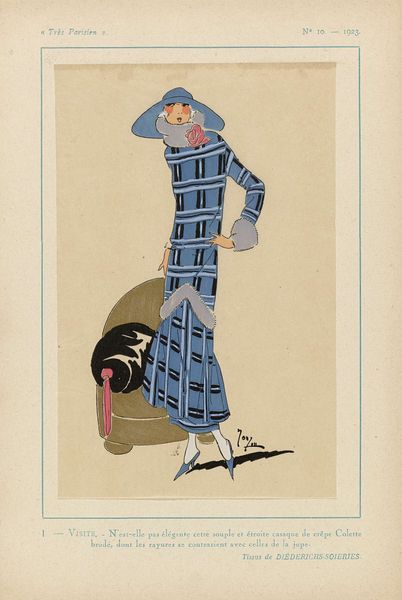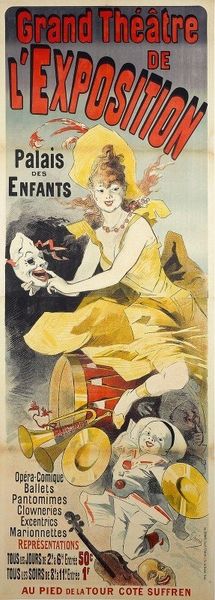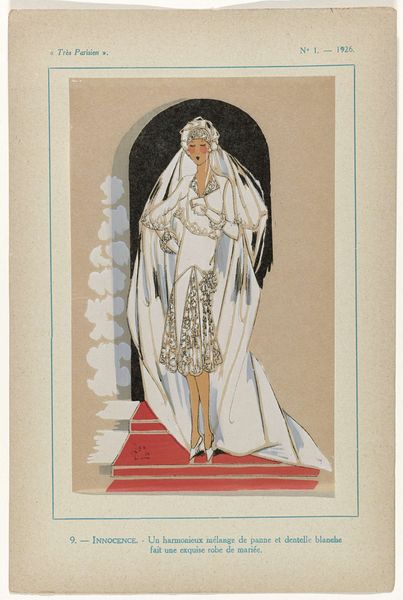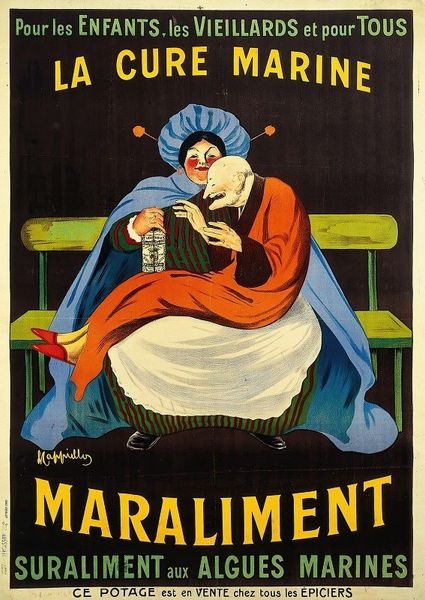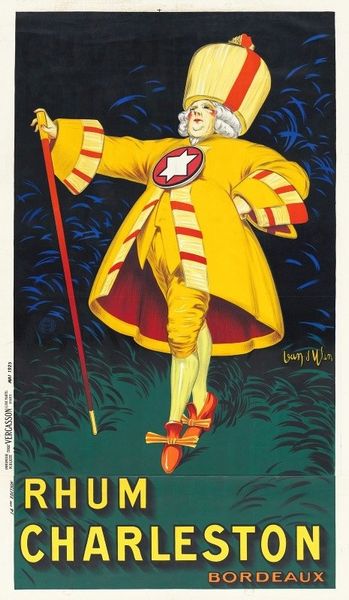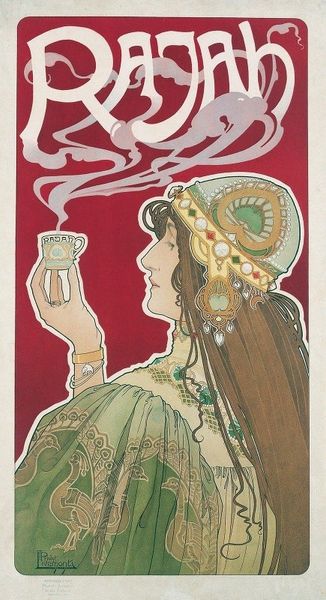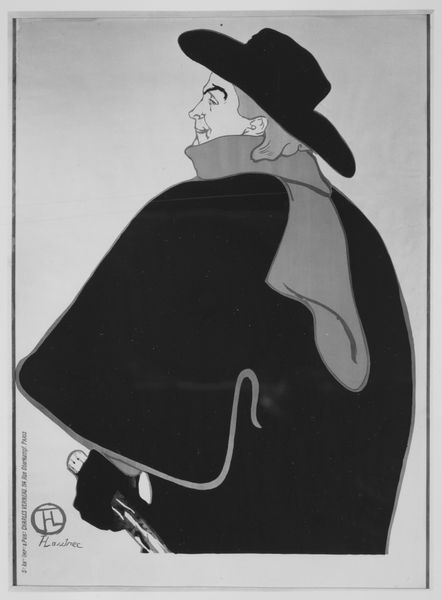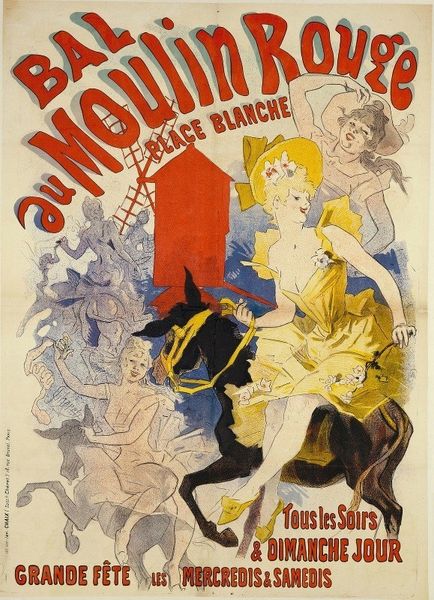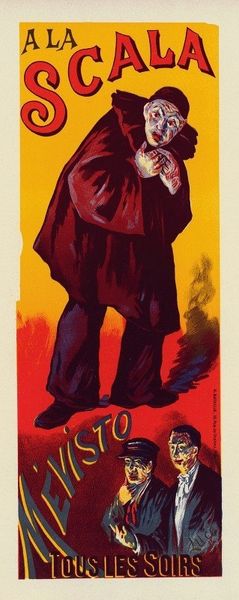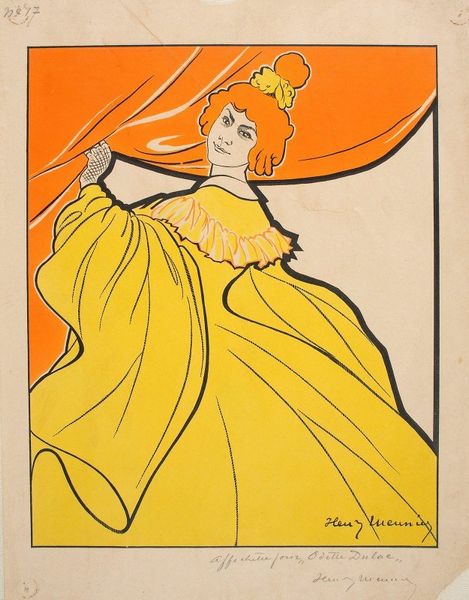
poster
#
art-nouveau
#
caricature
#
caricature
#
pop art
#
figuration
#
poster
Copyright: Public Domain: Artvee
Curator: This striking poster is titled "Cognac Henry Mounier," created around 1910 by Leonetto Cappiello. It's an advertisement, but hardly straightforward, is it? Editor: Not at all! The first thing that strikes me is the almost aggressively bold use of color against that stark black backdrop. And what is that... a roulette wheel for a head? It's incredibly unsettling. Curator: Cappiello was known for shaking up advertising, moving away from detailed realism toward simpler, more eye-catching imagery. His approach revolutionized poster design at the time. This design embodies many traits from Art Nouveau, like the flattened space and highly stylized design. The figure has their back to us, wearing an ermine-trimmed cape, almost regal, yet the roulette wheel replacing the head suggests chance and luxury, key associations for Cognac. Editor: Right, luxury aimed at a wealthy, likely male audience, and certainly a European demographic. The visual metaphor seems clear—Cognac is a game of chance, but with a high potential payout, signified by the regal attire. The back-facing figure can easily be viewed through the lens of colonial decadence too. Who really profits from these 'games of chance?' Curator: I think that’s a valid consideration given the history of luxury goods and colonial exploitation at the time. The anonymity provided by having his back turned certainly makes the symbol flexible, to accommodate different interpretations and tastes. This design isn't about a specific person as much as it is a symbolic association between luxury and Cognac. Editor: Definitely. I mean, if you look at it within the scope of post-colonial theory, this image feels more complex than a simple celebration of the elite lifestyle. It hints at an uneasy connection between wealth, chance, and maybe even a subtle critique of excess. Curator: Regardless of our interpretation, I believe we can all agree on its impact and relevance in understanding the social and historical forces at play within the sphere of advertising. Editor: Absolutely. It challenges us to think critically about the messages embedded within seemingly simple marketing imagery and it prompts conversation about a problematic, and potentially damaging history.
Comments
No comments
Be the first to comment and join the conversation on the ultimate creative platform.
